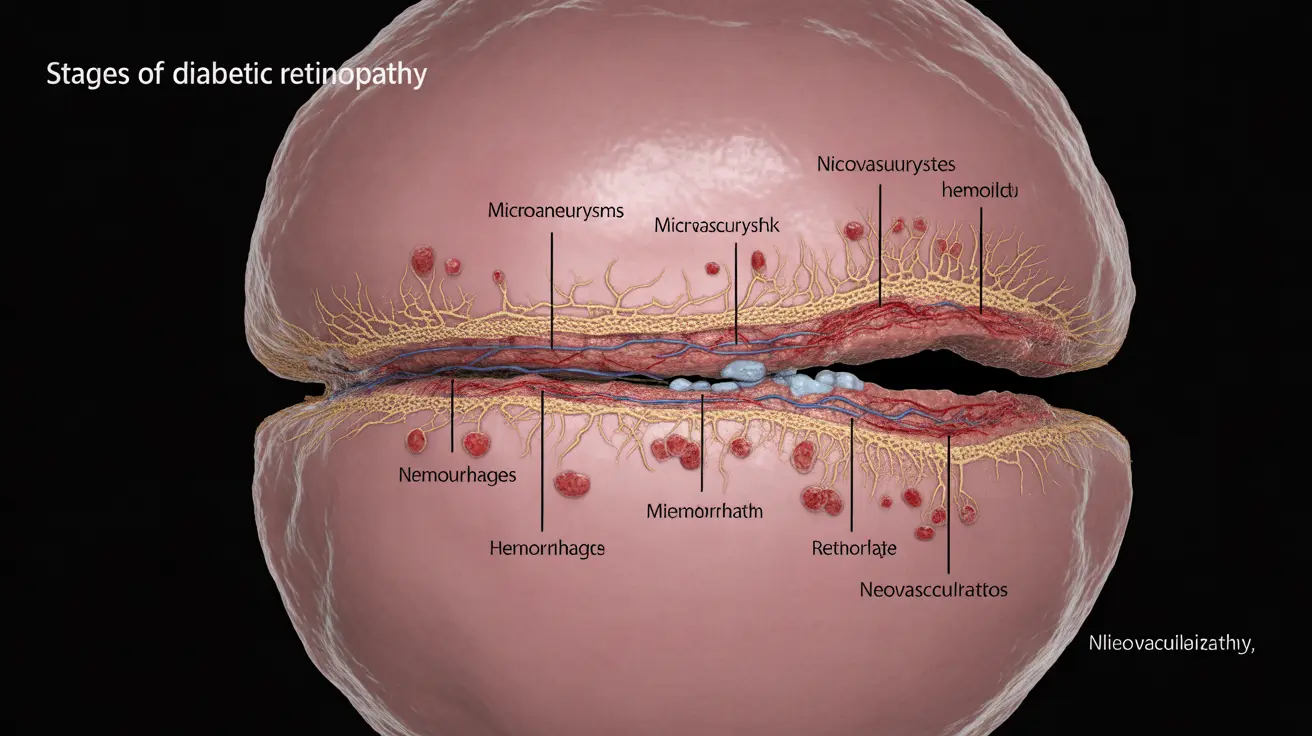Diabetic retinopathy represents a serious complication of diabetes that affects the blood vessels in the retina, potentially leading to vision problems or blindness if left untreated. Understanding the difference between proliferative and nonproliferative diabetic retinopathy is crucial for proper diagnosis, treatment, and management of this condition.
This comprehensive guide explores the key distinctions between these two forms of diabetic retinopathy, their symptoms, treatment options, and potential outcomes for patients living with diabetes.
Understanding Nonproliferative Diabetic Retinopathy (NPDR)
Nonproliferative diabetic retinopathy (NPDR) represents the early stage of diabetic retinopathy. During this phase, damaged blood vessels in the retina begin to leak fluid and small amounts of blood into the retinal tissue.
Characteristics of NPDR
The main features of nonproliferative diabetic retinopathy include:
- Microaneurysms (small bulges in blood vessels)
- Retinal hemorrhages
- Hard exudates (protein deposits)
- Cotton wool spots (areas of retinal ischemia)
- Macular edema (swelling in the central retina)
Understanding Proliferative Diabetic Retinopathy (PDR)
Proliferative diabetic retinopathy marks the more advanced stage of the condition, characterized by the growth of abnormal new blood vessels in the retina, a process called neovascularization.
Key Features of PDR
The distinguishing characteristics of proliferative diabetic retinopathy include:
- Formation of new, fragile blood vessels
- Potential vitreous hemorrhage
- Risk of retinal detachment
- Severe vision loss if left untreated
- Development of fibrous tissue
Treatment Approaches
Managing NPDR
Treatment for nonproliferative diabetic retinopathy typically focuses on:
- Regular monitoring and screening
- Strict blood sugar control
- Blood pressure management
- Lifestyle modifications
- Treatment of macular edema if present
Treating PDR
Proliferative diabetic retinopathy requires more aggressive intervention, including:
- Pan-retinal photocoagulation (laser treatment)
- Anti-VEGF injections
- Vitrectomy surgery when necessary
- Combination therapy approaches
- Close monitoring and follow-up
Prevention and Risk Management
Preventing progression from NPDR to PDR involves several key strategies:
- Maintaining optimal blood glucose levels
- Regular eye examinations
- Controlling blood pressure and cholesterol
- Following a healthy diet
- Regular exercise as approved by healthcare providers
Frequently Asked Questions
What is the difference between proliferative diabetic retinopathy and nonproliferative diabetic retinopathy?
Nonproliferative diabetic retinopathy is the early stage where existing blood vessels in the retina become damaged and leak. Proliferative diabetic retinopathy is the advanced stage characterized by the growth of new, abnormal blood vessels that can cause severe complications.
What are the common symptoms of nonproliferative versus proliferative diabetic retinopathy?
NPDR symptoms may be mild or absent initially but can include blurred vision and floating spots. PDR symptoms are typically more severe, including significant vision loss, floating spots or streaks, and sudden vision loss due to bleeding or retinal detachment.
How is proliferative diabetic retinopathy treated compared to nonproliferative diabetic retinopathy?
NPDR treatment focuses on monitoring and controlling diabetes, while PDR requires more aggressive interventions like laser therapy, anti-VEGF injections, or surgery to prevent vision loss.
Can nonproliferative diabetic retinopathy progress to proliferative diabetic retinopathy?
Yes, without proper management and treatment, NPDR can progress to PDR. Regular monitoring and maintaining good blood sugar control are essential to prevent this progression.
What are the risks of vision loss associated with proliferative diabetic retinopathy versus nonproliferative diabetic retinopathy?
NPDR typically carries a lower risk of severe vision loss, though vision can be affected by macular edema. PDR has a significantly higher risk of severe vision loss or blindness due to complications like vitreous hemorrhage and retinal detachment.




